County: Ribe amt.
HOTELS. Dagmar, Torvet 1, 80 Klubbens Hotel, Skolegade 6, 50 Sonderjylland, Sonderportsgade 22, 10b.- YOUTH HOSTEL: Hovedengen. CAMP SITES: Ribe, Farupvej and Villebel.
RESTAURANTS. Backhaus, Grydergade; Klubbens Kro, Skolegade; Stenbohus, Torvet.
Ribe is Denmark’s oldest town (though Viborg might dispute this claim), preserving many reminders of its heyday in the Middle Ages, when it was the most important town in western Jutland. It is a charming little place, with its old half-timbered houses and narrow winding lanes.
An old half-timbered house in Ribe
HISTORY. By around 850, when its name first appears in the records, Ribe was already a prosperous trading town. The first church in what is now Denmark was built here a wooden church erected in 862 by the Frankish monk, St Ansgar. He had been sent by the Emperor Louis the Pious to evangelise the northern countries and gained the favour of King Horich the Younger. In 948, Ribe became the see of a bishop. King Niels built a castle outside the town in 1115, but Ribe was of more importance as an ecclesiastical than as a secular area: by the late medieval period it had four religious houses and six churches. With the Reformation, however, came a period of decline; Ribe was reduced to the status of an impoverished little country town. It began to recover only after the First World War, when northern Slesvig (southern Jutland) returned to Denmark.
SIGHTS. The development of industry has not destroyed the pattern of the old town since the new buildings have been erected in the outskirts. A walk around the middle of Ribe is an exploration of the past, disturbed only by the cars which now invade its narrow streets. In the market square stands the Romanesque
and Gothic Cathedral, built partly in grey stone from the Rhineland and partly of Danish brick (begun before 1134, probably completed in 1225).
The 50 m (1 64 ft) high tower, square and without a spire, was built for defensive purposes in the 13th c. and offers a magnificent panoramic view of the flat surrounding country. The great weight of the tower endangered the safety of the whole structure, which was built on unstable alluvial land, and only thorough restoration work at the turn of the 19th c. saved the church.
The nave originally had a flat roof; it was replaced by vaulting in the 13th c. The INTERIOR is noteworthy for its simple and massive forms, which create an effect of lightness and space. The nave is flanked by double lateral aisles; over the choir is the only Romanesque masonry dome in Denmark. Three doorways (W, S and N) are well preserved or restored. The S doorway is popularly known as the Cat’s Head Door because of the Gothic lion’s head on the bronze door; it is framed by two granite columns on each side, the outer column resting on the figure of a lion devouring a man. In the tympanum of the S doorway is a Romanesque relief of the Descent from the Cross (probably 1150); in the triangular relief above the doorway is a representation of the Heavenly Jerusalem.
The carillon plays a psalm, Den yndigste Rose (The Fairest Rose), at 8 a.m. and 6 p.m. daily and the popular tune Queen Dagmar at 12 noon and 3 p.m.
The OLD TOWN of Ribe contains a unique assemblage of old half-timbered houses, the most notable of which is the Puggard, the oldest surviving secular building in the town. At the corner of Sonderportsgade and PuggSrdsgade, the last relic of the old street lighting system can be seen a small scroll under the gas-lamp below the roof overhang from which an oil-lamp was suspended. In Skolegade, which opens off Sonderportsgade, is Hans Tausens Hus, once part of Bishop Tausen’s house, now occupied by an archaeological museum. In PuggSrdgade is the aristocratic mansion of Tarnborg, a turreted stone house (1550). The Gothic Town Hall (1528) houses a small Municipal Museum. The Museum of Art contains works by Danish painters from the 18th c. to the present.
One of the attractions of Ribe is the storks’ nests to be seen on old chimneystacks. SW Jutland is one of the last stork refuges, but since they are becoming steadily rarer Ribe is in danger of losing its claim to being the city ofthe storks.
Atthe Dagmar BridgeareSt Catherine’s Church and the adjoining monastery, a Dominican house founded in 1228, with some of the finest monastic buildings in Denmark. The cloister, with its open arcades, breathes an atmosphere of peace and contemplation. St Catherine’s Church underwent thorough renovation in 1928-32 to restore it to its 15th c. form. In the course of 500 years, one side of the church had sunk 60 cm (2 ft), but during the restoration work it was brought back to a horizontal position within six days. On a hill, NW of the town, are the excavated remains of the 12th c. castle of Riberhus (tombs, fragments of wall, statue of Queen Dagmar). From the hill there is a fine view of the town.
View of the Romsdalshorn
Ribe lies on the little Ribea, which flows into the sea a short distance from the town. When storm winds blow from the W, the sea is driven inland, and Ribe is still occasionally exposed to severe flooding, in spite of the dikes and sea walls that have been built. On the harbour quay, Skibbroen, is the Stormflodssojle, a column showing the height reached by flood-water in various years from 1634 to 1911. On Nedermannen is the Ydermoiie, a water-mill driven by the Ribea. In summer there are boat trips on the river (rich bird-life).
SURROUNDINGS. 10 km (6 miles) away lies the little island of Mando, the smallest inhabited island in the Vadehav (North Sea Flats), with a church, a local museum, an ornithological collection and an inn. Most of the island (area 6 sq. km (2i sq. miles), pop. 109) consists of marshland, surrounded by dikes. To the W are dunes up to 12 m (40 ft) high. At low tide it is possible to wade out to the island. There is a road from Vester Vedsted to the island which is covered by water when the tide comes in. Visitors should not attempt to use this road in their own car, but should take the mail bus, which carries passengers and goods; the driver of the bus knows when and which way it is safe to go.
6 km (4 miles) from Ribe is Hviding, a prosperous port and commercial town until it was displaced by Ribe in the 13th c. The church (12th c.) was enlarged in the 16th it has a fine late Gothic altarpiece with side panels, with a rare representation of the Crucifixion surrounded by a rosary.

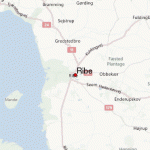


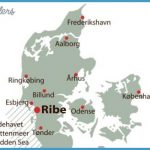
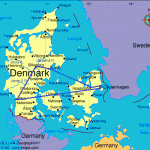
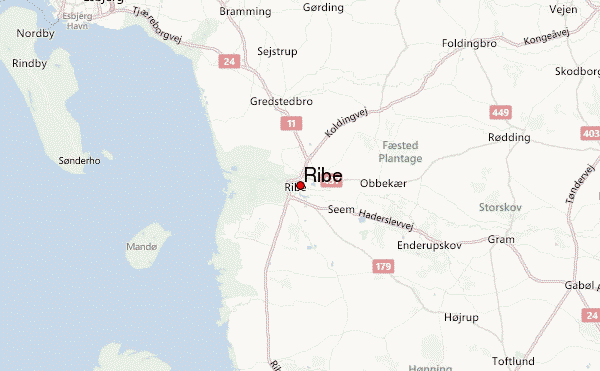

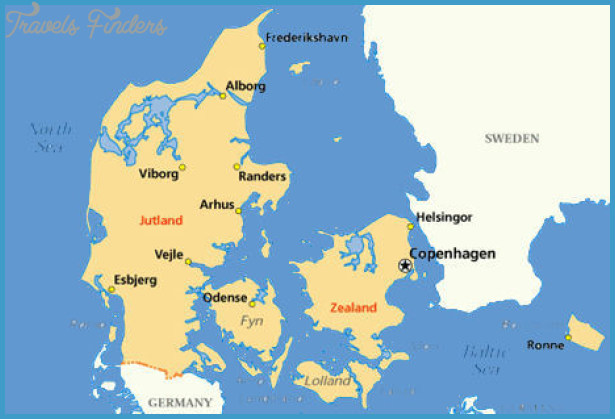
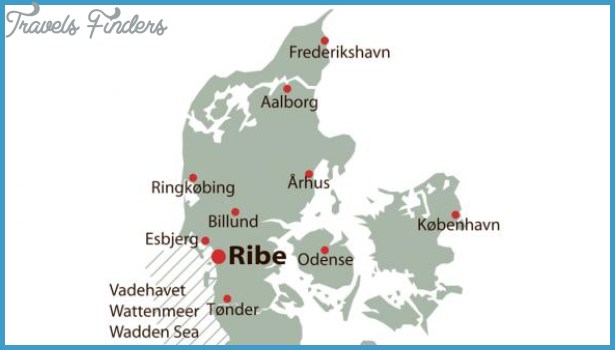
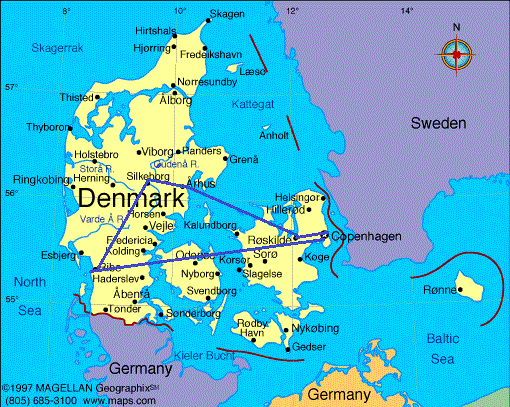
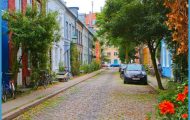
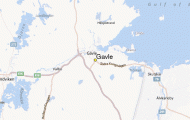
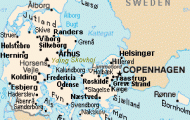

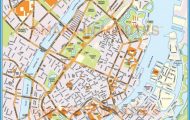

Excellent